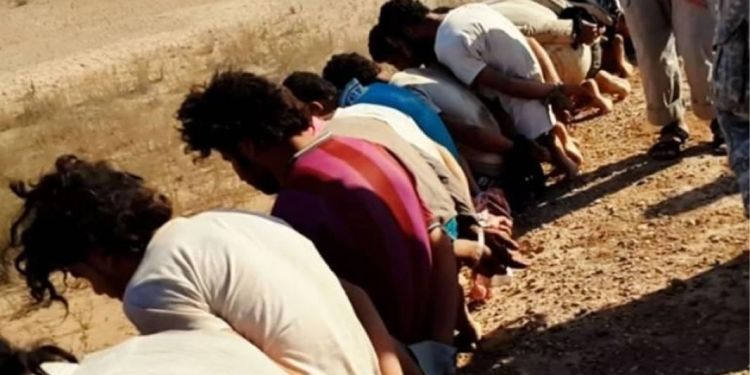This post is also available in:
![]() العربية
العربية
Today marks the tenth anniversary of one of the most heinous massacres committed in Syria, the Al-Shaitat massacre committed by Daesh against Al-Shaitat tribe in the eastern countryside of Deir Ezzor, following their uprising against the organization.
Between 1,000 and 1,200 people from the tribe were killed in this massacre, most of them civilians, including women and children, according to what activists and human rights organizations agreed upon regarding documenting the number of victims, whose numbers have been increasing for a year since the massacre due to the discovery of mass graves in the area.
Al-Shaitat tribe lives in the towns of Al-Kashkiya, Abu Hamam, and Gharanij in the eastern countryside of Deir Ezzor, and its members are estimated at 120,000 people, who were displaced by Daesh from these towns after it took control of them and killed hundreds of people, allowing them to gradually return to their homes after about a year.
The massacre came against the backdrop of an uprising by Al-Shaitat clan against the organization, after it took control of the eastern countryside of Deir Ezzor, due to its bloody practices in the region, which fueled anti-Daesh sentiments, ending with an uprising against it.
A number of its members were killed, and its presence in several areas in the eastern countryside of Deir Ezzor quickly receded, as it was forced to bring new reinforcements from Iraq to quell the uprising and begin the process of collective revenge against the residents, by killing them and displacing them from their homes.
The fighters of the Al-Shaitat clan were still fighting the organization on several fronts since they left Deir Ezzor, where the most prominent of these fronts was the northern countryside of Aleppo, as they were the cornerstone in defending the region and confronting the ongoing Daesh attacks.











